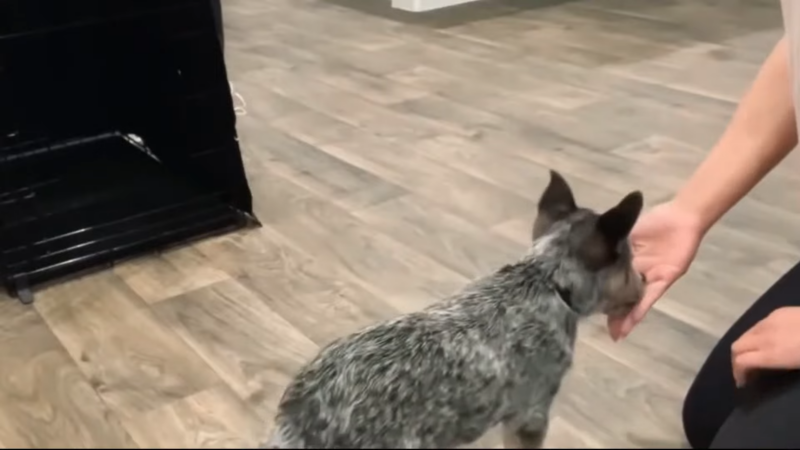
-
Srdjan Ilic
- Published:
- Updated: September 16, 2024
- Category: Pet Names and Types
Share Post:
Bluey, the beloved Australian children’s show, has captured the hearts of viewers around the world with its relatable family adventures and charming characters.
At the center of these stories is Bluey, a Blue Heeler, or Australian Cattle Dog.
Blue Heelers are known for their intelligence, loyalty, and energetic nature, making them ideal companions and working dogs.
This breed’s distinctive traits contribute to their appeal both on-screen and in real life.
Blue Heelers excel in herding livestock, a testament to their physical agility and sharp mental acumen. In “Bluey,” this translates to Bluey’s imaginative and adventurous play, driven by quick thinking and relentless energy.
These dogs require regular exercise and mental stimulation, aligning perfectly with the show’s theme of playful learning and active family life.
The Unique Traits of Australian Cattle Dogs
Trait
Description
Intelligence
Quick learners excel in various roles
Work Ethic
Thrives on tasks, always up for challenges
Loyalty
Strong bonds, protective nature
Physical Stamina
Built for endurance, excellent stamina
High Intelligence
This trait makes them ideal for various roles, from herding to search and rescue operations. Their ability to understand and follow complex commands is unparalleled among working breeds.
Strong Work Ethic
Australian Cattle Dogs thrive on having a job to do. Whether it’s herding livestock or completing agility courses, they exhibit a tireless work ethic. This trait ensures they are always up for a challenge and rarely show signs of exhaustion when engaged in tasks.
Loyalty and Protectiveness

They form strong bonds with their owners and are known to be protective. This makes them excellent guardians for families and property. Their protective nature does not manifest as aggressiveness but as a vigilant and watchful demeanor.
Physical Stamina
Australian Cattle Dogs are built for endurance, enabling them to cover vast distances without tiring easily. This trait is particularly useful for herding and other physically demanding activities.
About This Specie
Bluey has quickly become a cultural phenomenon since its debut in 2018. The show’s success can be seen in its international appeal, with broadcasts on Disney+ and ABC Kids in the United States and Australia.
This Australian children’s series is praised for its high-quality animation and storytelling. The well-crafted episodes resonate with both kids and adults, making it a rare gem in children’s programming.
Bluey appeals to a diverse audience, capturing the hearts of children and parents alike. The themes explored in the series often reflect real-life family dynamics, offering something for viewers of all ages.
Awards and Accolades
- Peabody Award in 2024
- Recognition from critics and audiences
The show’s impact extends beyond its entertainment value. Bluey offers educational and emotional benefits, integrating lessons about family, friendships, and problem-solving.
The characters, especially the Heeler family, are depicted in a way that promotes positive family values. The imaginative play scenarios within episodes encourage creativity among young viewers.
Bluey’s ability to bridge generational gaps makes it unique. Parents find the show relatable and often enjoy it just as much as their children, perhaps even more. Some have noted that the show helps in understanding child development.
Key Features
- Coat: Blue-gray or reddish-brown
- Height: 17-20 inches
- Weight: 35-50 pounds
- Lifespan: 12-16 years
Temperament and Behavior

They are incredibly loyal and often form strong bonds with their owners, making them excellent companions.
These dogs require substantial exercise and mental stimulation, as they can become bored and potentially destructive if left idle.
Their herding instinct makes them protective and sometimes wary of strangers, but with proper socialization, they get along well with other pets and children.
Traits
- Loyal
- Energetic
- Protective
- Social with proper training
Intelligence and Trainability
They respond best to positive reinforcement techniques and benefit from varied and engaging training sessions.
Their intelligence also makes them adept at learning complex tasks, which is why they often thrive in roles requiring precision and skill.
Early training and socialization are crucial to harness their potential and mitigate undesirable behaviors.
Highlights
- Quick learners
- Effective with positive reinforcement
- Excels in agility training
- Needs varied training sessions
Common Health Issues

Common issues include hip dysplasia, progressive retinal atrophy (PRA), and deafness.
Hip dysplasia impacts the hip joint, causing pain and arthritis. Regular vet check-ups can help manage this.
PRA is a degenerative eye disorder leading to blindness. Early detection through genetic testing can help breeders avoid passing it on.
Deafness, especially in one ear, is also seen in this breed and can be managed with proper training.
Diet and Exercise
High-quality commercial dog food or a well-planned homemade diet can maintain their health.
Proper portion control helps in preventing obesity, a common issue that can exacerbate other health problems. Exercise is equally important.
Blue Heelers thrive on daily physical activities like running, hiking, and agility training. Mental stimulation is also vital for this highly intelligent breed. Toys, puzzles, and training exercises keep them engaged and happy.
Life Expectancy

Blue Heelers typically live between 12 to 16 years, with some reaching their late teens.
Factors influencing their lifespan include genetics, diet, exercise, and regular vet care.
Routine veterinarian visits can identify and manage health issues early, extending their life.
Consistent care, including dental hygiene and vaccinations, also contributes to their longevity.
With proper attention and care, Blue Heelers can enjoy a long, healthy life, making them a beloved companion for many years.
The Bond Between Blue Heelers and Their Owners
They are known to form tight-knit bonds with their owners, often acting as great protectors for their households. Their loyalty stems from their herding background, where a strong and trusting relationship with their handler was crucial. This bond translates into a deep companionship, making Blue Heelers excellent family pets.
Activity Requirements

Owners should be prepared to engage in regular activities like walks, runs, and playtime.
Their energetic nature also makes them excellent partners for more rigorous activities, such as hiking or agility training. Meeting these activity needs is essential for maintaining a strong and positive relationship between the dog and its owner.
Training and Socialization
Their intelligence and eagerness to please make them highly trainable dogs. Early socialization helps them become well-rounded and well-behaved pets.
Consistent, positive reinforcement techniques ensure effective learning and strengthen the bond between the dog and its owner. Blue Heelers thrive in environments where they are both mentally and physically stimulated.
Related Posts:
- Bingus the Hairless Cat - What Makes This Sphynx So Special?
- Can My Dog Take Phenergan? - Safe Uses for Pets
- Why French Bulldogs Shouldn’t Have Puppies…
- Should You Include Kiwi in Your Dog’s Diet? Here’s Why
- Don’t Trust That “Pet Expert” Online – Here’s Why…
- Why Does My Dog Have Black Gums? - Causes, Symptoms,…









